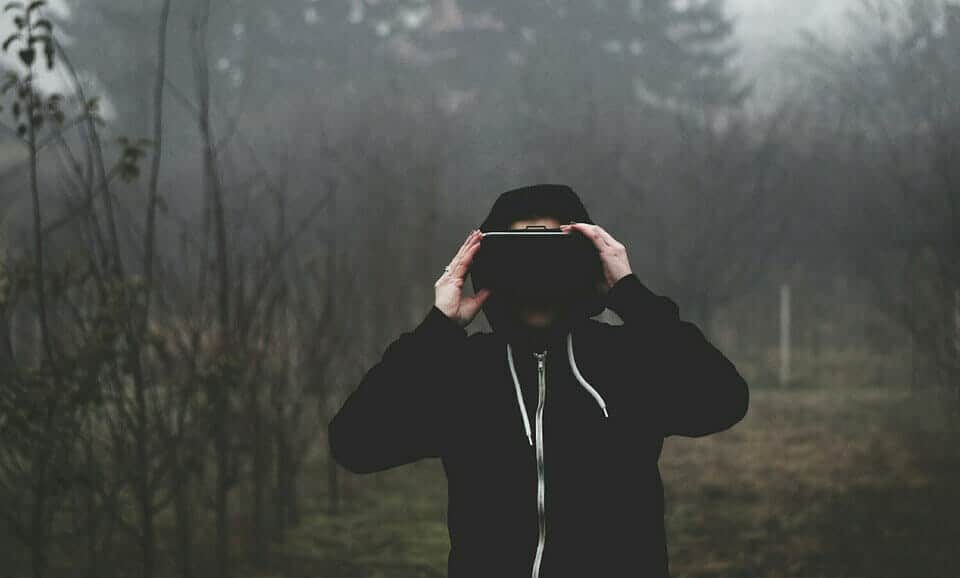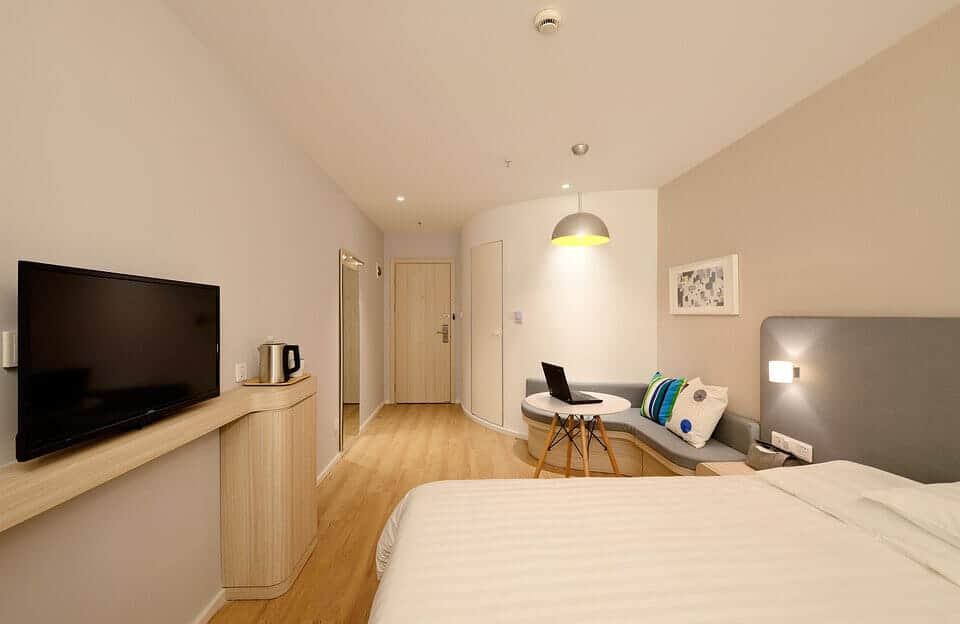
We have always been fond of imagining the incredible or impossible but reality has often needed some time to catch up with our minds. Now that we are exploring more and discovering more, it is something of a tragedy that we can’t get there quicker. We are learning more about space every day but can’t go there yet. We read about all these amazing destinations but don’t have the time or money to visit all of them in our lifetime.
We are slowly kicking our addiction to material goods and are looking for a new high in unique experiences. With Virtual Reality, we can accommodate this trend by completing our destination bucket list and even by adding some things we might never have thought of. Next, to that, Virtual Reality is slowly but surely transforming the way we will travel as well as the way we will decide on where to go.
What is Virtual Reality?

Virtual Reality (VR) is an interactive, computer-generated immersion into a simulated environment. Although it has the reputation for mainly playing with our visual perception, other senses, like the sense of touch, has also been incorporated into the experience.
The world can either be inspired by the real world or a fantastical one, but it can also combine the two and add some fantastical details into an existing location (augmented reality).
VR is most commonly explored with a virtual reality headset, sometimes aided by certain objects or props do make the experience more layered and realistic.
VR and the travel industry
VR has many different kinds of applications and the travel industry is one that is being transformed by it in many ways. Virtual Reality is an amazing tool for enhancing existing experiences or presenting us with those that are still impractical to visit physically. VR will surely become an indispensable tool for our traveling experiences as well as an effective sales technique for hotels and travel agencies.
Travel where it wasn’t possible before
You might have some destinations on your list that are too dangerous or nearly impossible to visit in person. Or perhaps a bit too impractical for you to visit for other reasons. You might even have scratched these destinations off of your list altogether. In this context, VR has taken up the job of fulfilling some ultimate destination wishes that will, In turn, transform the way we think about them.
Dangerous or unstable destinations
Marcus Olsson, CEO, and founder of SceneThere has devised some travel destinations in a virtual reality context. When he was invited to North Korea to speak on entrepreneurship, he took the opportunity to bring his 360-degree camera and take some shots while he was there, turning them into a VR travel experience.
North Korea is a place most of us have never been to considering the current state of affairs. Olsson’s idea in this is rather two-fold. He doesn’t only want people to see a place as if they are there, but perhaps it will also stimulate them to eventually take the chance to go there anyway. This way they can serve as an introduction to some places and in time, perhaps boost tourism in unexpected places.
theBlu
Travel has often been associated with conquering our fears and experiencing something entirely new. The ocean can very easily be a rather intimidating destination but definitely also an interesting one. theBlu offers an underwater experience that brings you within touching distance of some of the ocean’s most iconic creatures. You can stand on a sunken ship scattered across the ocean floor and watch whales swim by. If you want, you can even have some adventures and help marine biologists on a quest to save some animals and learn as you are confronted with the real dangers of an underwater trip.
Birdly
Travel has also been associated with a desire for freedom and no creature embodies this sensation more than the bird. Our desire to fly has taken shape in many different ways in the tourism industry. One of these is zip line and canopy tours where you can soar over jungles and forests, even near oceans. With Birdly, our new travel destination can be the skies themselves as well as some famous locations we can now explore from the air.
Titans of Space 2.0
Most places on earth can be put within our grasp but the same can’t be said for space. Space travel has been the source of debate (and dreams) for decades but as far as commercial travel goes, we still have a long way to go. With VR, we can go on a tour of the solar system that would exceed the efforts made by even the best planetariums.
Travel more interestingly at the destination itself
Other than creating a destination in VR altogether, an actual location can also be augmented into a more interesting and more educational travel destination. Here are two amazing examples;
1. David Attenborough, National Museum of Australia
Do you just love Jurassic creatures from bygone eras? Yeah, me too. VR is transforming high culture just as much as destination tourism. The National Museum of Australia has opened exhibitions combing David Attenborough’s documentaries with close encounters with long extinct beauties as well as familiar destinations we can now see in a new light, as the great barrier reef.
2. SoReal China
China has opened the world’s first VR theme park. Located at the heart of Beijing, this theme park is a gamer’s dream. But it would be a mistake to think only gamers will get a kick out of this theme park. Wouldn’t many of us want to travel to the future, battle in space wars and even enter Star Trek? This high tech tourist attraction is bound to put Beijing even higher on people’s bucket list.
VR and the travel business
Although more easily connected to entertainment, VR is also being adopted to be applied for use in business. This is a particularly clever way to go about it. Next, to being overstimulated, we can also be distracted so easily. Rather than reading through a long, descriptive text or sitting through a sales pitch, it is so much more interesting to be shown the actual product, right then and there, as if we were present already. It is the theatrical yet equally effective version of ‘please, try this cheese cube and guarantee you will want to buy the whole block’.
VR and the hotel industry

A picture can be very misleading. They will always be taken from the best possible angle and highlight a room’s best features while hiding the worst. How often does a hotel room actually look like it did in the photo? By allowing a potential guest to take a virtual walk through one of the rooms, they are immediately being given a better idea about the sense of space, light, and ambiance into a room conveniently accommodated with a 360-degree angle.
A predecessor of this has already been used for many years in the 360-degree photo you could find on the websites of some more upscale hotels and resorts. This may have nudged us into the booking direction slightly but an actual walk through the room might almost be irresistible.
This can be taken further into a tour of the actual hotel and even a virtual booking process. Booking engine Amadeus has launched a virtual reality booking procedure in which you won’t only be able to purchase your plane ticket, for example, but you will be able to select your seat by taking a walk through the plane itself.
Sample your trip
The experience doesn’t have to stop with the sale of a hotel room. We rarely travel to just stay in our room, after all, but to get to know the location itself. This is why some hotels offer a virtual experience of some of the touristic highlights the area has to offer. You will able to stand on top of the Eiffel Tower or walk through the ruins of Rome.
Naturally, this method has also been adopted by some travel agencies who can now present the ‘month’s travel tip’ in a far more attractive jacket. If you are still deciding on the perfect honeymoon destination or where to go for your summer holiday, you can simply have a virtual one first.
VR Travel Apps
Conclusion
The virtual world is slowly merging with our physical reality and will definitely define the future of travel. Considering the big steps that have been taken already, the next couple of years are bound to be telling. VR will be a new sales technique using our strong focus on our visual senses as an incentive to buy. It will move tourism from the actual destination to the empire of our minds but on the other hand, it will also push us to visit certain places in person after haven been introduced to it. It gives life to our fantasies and makes impossible trips possible. The travel industry will always have a physical aspect tied to it and VR won’t replace traditional travel. It will simply transform it by combing what we already have, by what we dearly want to add to it.
Hopefully, you found these guides helpful.
Thanks for reading!
Pin It!

You may also like:
